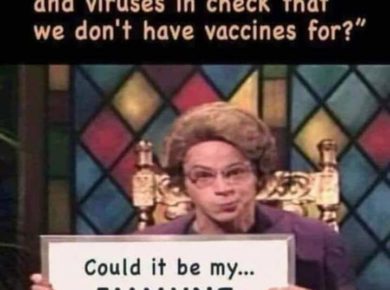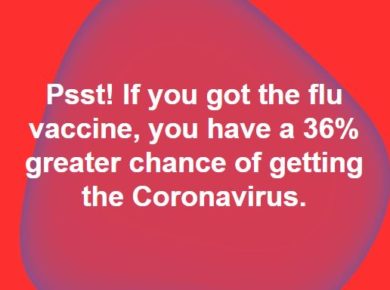This is a fact: death from heart disease has been declining for the last 15-20 years.
The main reason is better management of this disease using medications and medical approaches.
Nothing has been done when it comes to prevention. All the efforts, money, and energy have been spent on disease management, after the fact that someone is diagnosed with a cardiovascular condition.
Progress in reducing the number of deaths related to cardiovascular disease has been waning in recent years, heightening concerns that the obesity epidemic in the United States is undoing improvements in heart health.
A research letter published Tuesday in Journal of the American Medical Association confirms that although the death rates from heart disease, diabetes, stroke, and related disorders have been decreasing for decades, the rates have recently slowed or stalled.
Trends in Cardiometabolic Mortality in the United States, 1999-2017 published in the journal JAMA. 2019;322(8):780-782.
The authors state:
“While cardiovascular disease (CVD) death rates declined by approximately 36% from 2000 to 2014, CVD remains the leading cause of mortality among US adults. Annual declines in CVD mortality slowed between 2011 and 2014 (0.7% fewer CVD deaths per year), and it appears unlikely that strategic goals from the American Heart Association (20% reduction by 2020) will be achieved. To clarify the most recent national trends, we investigated CVD and other key cardiometabolic disease mortality rates overall, by sex, and by race from 1999 to 2017.”
AAMR stands for Age-adjusted mortality rates (AAMRs)
In 1999, total deaths by cause (AAMR per 100 000 population) were 725 192 (266.5) from heart disease, 167 366 (61.6) from stroke, 68 399 (25.0) from diabetes, and 16 968 (6.2) from hypertension.
In 2017, total deaths by cause (AAMR per 100 000 population) were 647 457 (165.0) from heart disease, 146 383 (37.6) from stroke, 83 564 (21.5) from diabetes, and 35 316 (9.0) from hypertension. During 1999-2017, 12.3% of fatal cardiometabolic events occurred in black individuals and 85.1% in white individuals, and 51.3% occurred in women.
Between 1999 and 2017, the AAMRs for heart disease, stroke, and diabetes declined, but the AAMR for hypertension increased in most sex-race groups except in black women, for whom the hypertension AAMR remained generally unchanged.
Black individuals consistently had higher AAMRs compared with whites. In 2017, the highest AAMR ratios were in black compared with white women due to diabetes (2.09) and in black compared with white men due to hypertension (2.18). Black men consistently had the highest AAMRs across all underlying causes of death.
These findings demonstrate a continued but slower decline in AAMR for heart disease, a plateau in mortality rates from stroke and diabetes, and an increasing AAMR for hypertension (although hypertension as the underlying cause of death remained relatively infrequent) between 2010 and 2017.
Clinical and public health efforts focusing on primordial and primary prevention throughout the life course, with an emphasis on identifying and addressing the causes of racial disparities, are needed to reverse the slowing of cardiometabolic mortality rate declines.
“At best, progress has slowed to a halt, and, at worst, our rates of cardiovascular disease are going up,” said Steven Nissen, the chief academic officer for the Heart and Vascular Institute at Cleveland Clinic. “And the cause, pretty much everybody agrees, is the obesity epidemic and all of its downstream consequences.”
Did you get what he said? He blames this increase of cardiovascular disease on obesity. But here’s the thing, obesity and heart disease shares the same cause; a poor diet!
More than 93 million adults and nearly 14 million children and adolescents in the United States are considered to be obese, a number that has been climbing for decades, according to the Centers for Disease Control and Prevention.
Obesity, which disproportionately affects black and Hispanic people, can lead to diabetes, stroke, and heart disease, the latter being the leading cause of death in the United States.
Senior author Sadiya Khan, assistant professor of cardiology and epidemiology at Northwestern University’s Feinberg School of Medicine, said the research also showed that the disparities between black and white Americans have persisted, with black Americans at a greater risk of death from these diseases.
The CDC released data last year, showing that the death rate for heart disease has been decreasing about 2.4 percent per year among white people and 2.2 percent per year among black people over the past 50 years.
Khan said the researchers were surprised to learn that “we’re not seeing continued progress” despite a steady decline in smoking, a common cause of cardiovascular disease, and ongoing advances in medicine, including diagnostics, new drugs to treat high cholesterol, high blood pressure and diabetes and surgical techniques.
“The concern is that if there’s a plateau now, what’s coming in the next five to 10 years?” she said.
Cardiologist Salim Virani, chair of the American College of Cardiology’s Council for the Prevention of Cardiovascular Disease, said, “It’s not all negative, death rates have come down.” But he said it’s important to continue pushing for medical advancements, uniformly, across all populations, to further reduce death rates.
Eduardo Sanchez, the American Heart Association’s chief medical officer for prevention and chief of the Center for Health Metrics and Evaluation, said in a statement about the new study:
“While we are heartened by the collective impact of efforts to reduce cardiometabolic mortality, we cannot and will not be complacent about recent reductions and plateauing in the rates at which CVD [cardiovascular disease] mortality is dropping.”
So they blame obesity for the slight increase in heart disease, and they recommend better medications and approaches to help people.
But what about PREVENTION?
According to the American Heart Association, these are the 7 steps we need to take to minimize our risks of cardiovascular issues:
1. Manage Blood Pressure
2. Control Cholesterol
3. Reduce Blood Sugar
4. Get Active
5. Eat Better
6. Lose Weight
7. Stop Smoking
If you look carefully, 5 out of 7 relate to diet and nutrition: blood pressure, cholesterol, blood sugar, eat better, and lose weight.
All these can be addressed with dietary changes.
So, what is a good diet then to accomplish this?
It seems pretty obvious, but not for everybody, it is to eliminate processed foods. That is the first step, no junk foods, no sugar, no vegetable oils (corn, canola, cottonseed, etc), no trans fat, no grains (wheat, corn, soy) and no pasteurized dairy products.
Trans fat is THE first cause of heart disease. Here’s why.
Trans fat gets into the heart tissue leading to decreased oxygenation of the heart muscles. Over time, because of lack of oxygen into the heart muscles, anaerobic metabolism happens.
Have you ever been to the gym and felt sore the next day? It is the accumulation of lactic acid because of anaerobic metabolism that happens in the absence of oxygen.
The same phenomenon happens in the heart. But the heart muscles can’t rest like the other muscles. Otherwise, your heart stops beating, and you die…
Consequently, over time, year, lactic acid builds up in the heart muscles leading to heart failure or a heart attack.
So, the primary cause of heart issue is acidification of the heart muscle.
Other factors like chlorine, mercury, aluminum, pesticides, infections, etc. can also cause heart problems.
Now we know what to not to eat. What about what we should eat?
Again, the concept is straightforward, we need to consume fresh foods.
Anything that is fresh like vegetables, fruits, nuts, fish, seafood, eggs, and meat.
By eating this way, the body can heal itself.
For example, I had this gentleman, in his 70s, who came to me because he had a 90% blockage in one of his arteries. Obviously, the doctor wanted to operate on him, but he was not okay at all with this.
So, he came to me for other options. I put him on a high-fat diet, about 70-80% of his diet was coming from fats like avocados, nuts, eggs, meats, and bacon.
Six months later he went back to his doctor for his checkup. The doctor was puzzled because 70% of his blockage was gone! The cardiologist had never seen that before! Usually, when you have a blockage you need to be operated on at some point.
But the body is smarter than that! It can remove those blockages naturally!
When people tell me that we need to avoid animal fats to be healthy, that is the most absurd myth in the field of nutrition.
I cured my high blood pressure, high cholesterol, high triglycerides, and PVCs using a high-fat diet. If fat is bad, why so many doctors have cured a variety of health issues recommending a high-fat diet?
I have read more than 2000 studies on this topic that I compiled in a book that I published.
The evidence is overwhelming! Animal fats are part of a healthy diet. We need them!
We have lived on animal products for generations and millennia. We have always been healthy until recently.
The problem is not animal fats, but processed foods which include processed meats that are loaded with hormones, antibiotics, and other chemicals.
Heart disease can be prevented. And we do this by eating fresh foods and eliminating processed foods.
God bless y’all 😊
Dr. Serge







